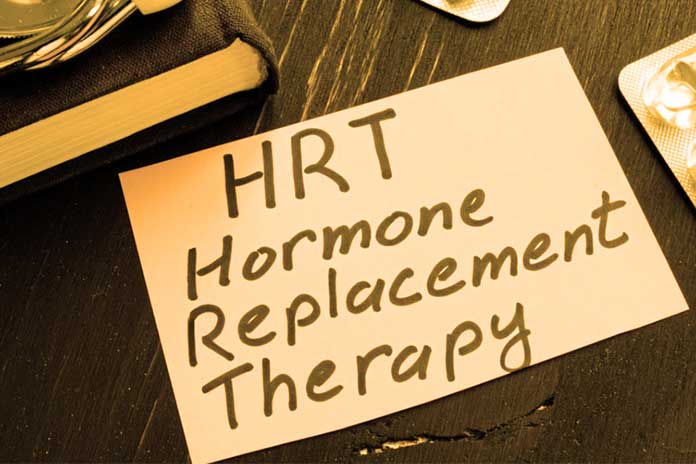Side Effects Of Menopause
One of the leading health problems of older women is identifying and differentiating the physical changes induced by menopause from those caused by aging. After the age of 50-55, the woman’s body undergoes many changes due to hormonal metabolism (since estrogen, female sex hormones, decrease), and some conditions, such as obesity, type 2 diabetes mellitus, thyroid dysfunction, and hypertension, develop more frequently during “middle age.” For this reason, today we speak of the “menopausal transition”: A period that can last from 2 to 10 years, characterized by an altered hormonal secretion that manifests itself with irregularities in the menstrual cycle up to the complete cessation of menstruation.
Generally, after this period, hot flashes appear, considered the main symptom of perimenopause (time interval before menopause), which then continue into post-menopause until gradually disappearing over time. When hot flashes, sweats, and sleep disturbances become severe and adversely affect a woman’s quality of life, hormone replacement therapy should be considered, of course, after evaluating the individual risk and contraindications with your gynecologist, especially for women with previous breast, ovarian and uterine cancer, blood clotting problems, arterial hypertension, and liver disease.
Hormone Replacement Therapy
As the word suggests, HRT ( hormone replacement therapy ) is a treatment that replaces the hormones that women no longer produce when they go through menopause.
- The hormones most used in this therapy are estrogens, and progestogens reproduced in the laboratory but equivalent to those naturally produced by the ovaries when the woman is still fertile (before menopause).
- HRT should be personalized by the gynecologist individually, as every woman is different. It must improve the quality of life and reduce the risk of osteoporosis or cardiovascular disease.
- HRT may include taking both hormones ( combined HRT ), the most commonly used therapy for postmenopausal women, or estrogen alone. It can be taken in the form of pills, patches, or gels: the gynecologist will suggest the best treatment for each woman.
- Alternative therapy with hormone preparations extracted from plant sources (phytoestrogens, similar to human hormones) is an alternative many consider natural and safer than the preparations used in HRT. However, solid scientific evidence on their efficacy and safety is not available for these preparations.
Side Effects Of HRT
It may take a few weeks before you feel the positive effects of HRT. In addition, some annoying symptoms may appear at the beginning of therapy, such as:
- Abdominal bloating, bloating
- Swollen, painful, and hypersensitive breasts
- Nausea and vomiting
- Heavy legs or cramps, blood circulation problems
- Migraine
- Slow and laborious digestion
- Mood changes
- Vaginal bleeding
In these cases, it is advisable to take the therapy with meals to help decrease nausea and digestive problems. On the other hand, regular physical activity improves swelling and leg cramps (especially water gymnastics).
When we talk about the effects of therapy on the quality of life, we refer to the self-assessment scales. The greater weight gives it relief from vasomotor symptoms and improvement of satisfaction with night rest.
The efficacy of estrogens and progestogens alone has been demonstrated on vasomotor symptoms. Low-dose estrogens are also effective, especially in formations combined with the addition of progestin, which enhances their effect.
Also Read: Corona, Flu Or Cold: What Are The Symptoms?
Non-Hormonal Therapy
A balanced diet, regular physical activity, and, generally, healthy lifestyles are part of the non-hormonal therapy for menopause. It is equally important to follow because it allows women to improve the annoying symptoms and their quality of life. An adequate diet in menopause allows, in fact, the menopausal woman to:
Promote A Correct Intake Of Calcium And Vitamin D
Milk and derivatives are the primary sources of dietary calcium, an essential mineral for preventing and fighting skeletal diseases typical of old age, such as osteopenia and osteoporosis. We remind you that Grana Padano PDO is the cheese that provides the most significant amount of calcium among all cheeses commonly consumed. Furthermore, milk and dairy products are one of the very few foods that also contain vitamin D, without which calcium would not settle in the bones. You can consume Grana Padano PDO as a second course (50 g) instead of meat or eggs 1-2 times a week. The recommended daily amount of calcium varies according to age, but in menopausal women, it is generally between 1000-1500 mg. You can make an estimate bearing in mind that:
- Milk and yogurt contain, on average, 120 mg of calcium per 100 ml of food.
- Fresh cheeses (e.g., stracchino, crescenza, etc.) contain, on average, 500 mg of calcium per 100 g of food.
- Aged cheeses contain, on average, 1000 mg of calcium in 100 g of food (Grana Padano PDO contains 1165 mg, the highest quantity of cheeses commonly consumed).
- Calcium mineral waters contain an average of 350 mg of calcium per liter. I prefer the lower sodium ones (check the labels’ values).
Remember that if your dietary calcium intake is insufficient, your body will take it from your skeleton, weakening your bones. Instead, the recommended daily amount of vitamin D is 400-800 mcg, which is reached by exposing the skin to the sun without filters for 15 minutes 2-3 times a week (because this vitamin is synthesized thanks to the sun’s rays) and by eating above all eggs, liver, fish and dairy products.
Encourage Good Nutrition
The diet of the postmenopausal woman must provide all the nutrients while moderating the quantities of sugar, saturated fat and cholesterol, salt, and food additives. Eating plenty of vegetables and the right amounts of fruit can help you reduce many symptoms of estrogen deficiency, and the proper consumption of polyunsaturated fatty acids (omega 3) helps reduce the cardiovascular risk to which the postmenopausal woman is more subject. Therefore:
- To get the right amount of omega three, you should eat 35g of fish every day, 150g 2-3 times a week, or two tablespoons of fish oil (e.g., cod liver) per week. This will also allow you to achieve an improvement in bone mineral density.
- The American Heart Association recommends a daily dietary intake of total fats not exceeding 30% of the total daily energy (10% saturated fats, 10% polyunsaturated fats such as those of fish, 10% monounsaturated fats such as those of olive oil, less than 300 mg of total cholesterol per day). 100 g of Grana Padano PDO contains all these fats: of the 29 g of lipids, 18.4 g are saturated, 7.4 g are monounsaturated, 1.1 g are polyunsaturated, and 99 mg represent cholesterol.
- It is necessary to increase the consumption of fiber (whole grains, legumes, dried fruit, etc.) and antioxidants (fruit and vegetables), as it helps the postmenopausal woman to decrease the absorption of fats and cholesterol introduced with the diet.
- Diets too high in protein and too low in calories should be avoided.
- Excessive use of salt should be limited. Adverse effects on bone mineral density have been reported when dietary sodium intake exceeds 2100 mg. You can use a tablespoon of grated Grana Padano PDO daily to season first courses and vegetable soups instead of salt.
Maintain An Average Weight
Many women gain weight during the menopausal transition period: remember that overweight and obesity are associated with increased morbidity and mortality for numerous chronic diseases, for cardiovascular risk factors such as hypertension and diabetes, for cardiovascular disease, as well as for various cancers, including that of the postmenopausal breast and endometrium. In producing estrogen, adipose (fatty) tissue synthesizes many other hormones that can suppress the production of ovarian hormones and affect thermoregulation, leading to symptoms such as swollen and heavy legs or blood circulation problems. For this reason, it is essential to shedding excess pounds, especially in women with problematic hormone therapy. Conversely, excessive thinness could also promote osteopenia and osteoporosis, as well as nutritional deficiencies. Two utterly free food programs help you not gain weight if you are in menopause:
- Calorie and Menopause Menu, designed for omnivores, provides four personalized calorie menus to be consumed each day based on physical characteristics and lifestyle. You will also find a physical activity plan, which accompanies the diet, suited to your natural abilities and possibilities.
- The LOVe program. for menopause has the same characteristics as the previous diet. Still, it provides four lacto-ovo-vegetarian menus for all women who prefer not to eat meat or fish.
Intervening On Eating Disorders
The menopausal transition can be associated with mood disorders, anxiety, depression, alteration of the sleep-wake cycle, etc., all possible risk factors for binge eating, to the point of becoming an actual eating disorder. A correct diet, therefore, also favors your psychological well-being.
Reducing The Risk Of Falls
Most bone fractures of postmenopausal women, especially the femur, are caused by a traumatic event such as a fall. Eating the right amounts of calcium and protein, exercising regularly, and exposing yourself to the sun, reduce the risk of bone fractures.
Also Read: Celiac Disease: Symptoms, Causes, Diagnosis


